When you invest in gold mining, it's essential to consider environmental and social responsibility elements. Responsible practices not only mitigate environmental impacts, like reducing toxic emissions and using cleaner technologies, but also foster strong community relations and ensure local economic benefits. Companies focused on sustainable practices, such as water conservation and habitat conservation, are pivotal for long-term profitability. Ethical mining investments can secure a social license to operate by prioritizing worker safety, fair labor practices, and robust community engagement. Such strategies safeguard your investment against operational and reputational risks. Exploring these aspects further can reveal deeper insights into sustainable investment opportunities.
Understanding the Importance
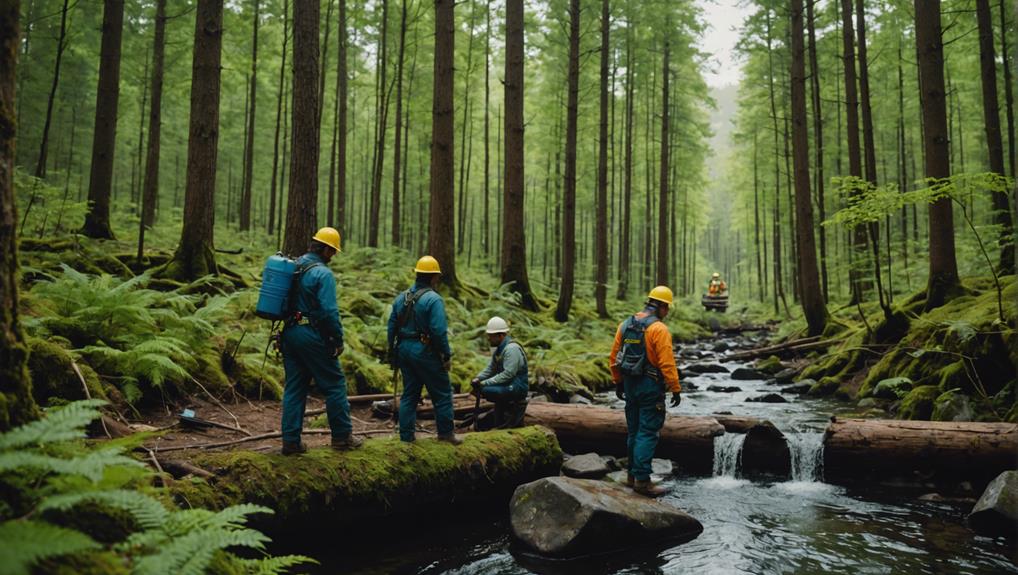
Recognizing the importance of environmental and social responsibility in gold mining is crucial for sustainable development. As you explore this industry, you'll find that responsible practices can significantly influence local communities and ecosystems. It's not merely about extracting minerals; it's about ensuring that the people and the land are treated with respect and care.
You should know that ethical gold mining supports local economies, creating jobs and improving infrastructure. By prioritizing worker safety and fair labor practices, companies set higher standards that others in the industry aspire to meet. Moreover, fostering strong community relations helps in securing mining rights and streamlining operations. Therefore, understanding and implementing these responsibilities isn't just the right thing to do; it's also intelligent business practice.
Environmental Impacts Addressed
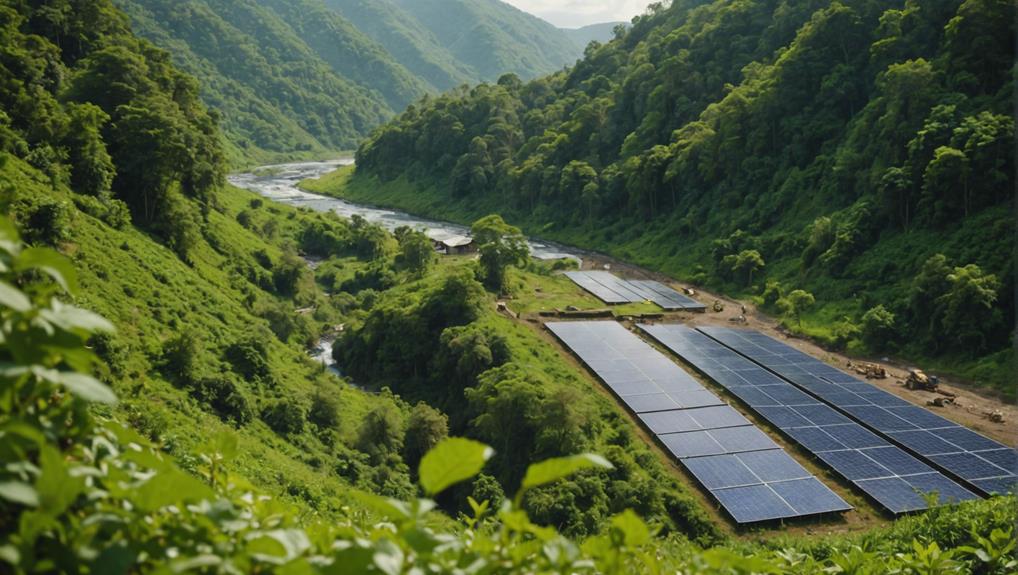
As you consider the environmental aspects of your gold mining investments, it's important to address specific impacts such as reducing toxic emissions.
Effective water resource management and habitat conservation efforts are also essential in minimizing the ecological footprint of mining activities.
Each of these points not only helps protect the environment but also improves the sustainability and social responsibility of your investment.
Reducing Toxic Emissions
Gold mining companies must prioritize reducing toxic emissions to mitigate their environmental impact. Here's how you can take action:
- Implement Cleaner Technologies: Adopt more efficient and less polluting mining technologies, such as bioleaching, which uses natural bacteria to extract gold, reducing the need for harmful chemicals.
- Improve Air Quality Controls: Install advanced air filtration systems to capture and treat noxious gases before they're released into the atmosphere.
- Regular Emissions Auditing: Conduct frequent and comprehensive audits to identify and address sources of emissions, ensuring compliance with environmental standards.
- Transition to Renewable Energy: Shift from fossil fuels to renewable energy sources to power operations, significantly cutting down on greenhouse gas emissions.
Adopting these measures not only protects the environment but also enhances your company's reputation and efficiency.
Water Resource Management
Effective water resource management is essential for minimizing the environmental impacts of your gold mining operations. By implementing advanced treatment systems, you'll ensure that water used in processing is cleaned and safe before it's released back into the environment. This step not only protects local waterways but also conserves water—a critical resource in many mining regions.
Additionally, it's important you monitor water usage to prevent over-extraction from local sources. Implementing recycling methods within your operations can significantly reduce this risk, maintaining a balance in the local ecosystem. Keep in mind, responsible water management doesn't just comply with regulations; it builds trust with local communities and secures the sustainability of your mining activities. Therefore, prioritize these practices to safeguard both the environment and your investment.
Habitat Conservation Efforts
You must also prioritize habitat conservation efforts to minimize the environmental impacts of your gold mining operations. These actions are essential not only for compliance but for the sustainability of natural ecosystems, which indirectly support your business by maintaining biodiversity and ecological balance.
Here are important strategies:
- Assess and Monitor Biodiversity: Regularly evaluate the species and habitats affected by mining activities.
- Implement Reclamation Plans: Restore vegetation and rehabilitate wildlife habitats after mining.
- Limit Surface Disturbance: Reduce the footprint of mining operations to preserve natural habitats.
- Collaborate with Environmental Scientists: Work alongside experts to develop and execute conservation strategies effectively.
These steps will help ensure that your mining practices are environmentally responsible and sustainable.
Community Engagement Strategies

Involving local communities from the onset of any mining project ensures their needs and concerns are directly addressed. You'll find that fostering transparent communication channels not only builds trust but also improves project outcomes. Holding regular town hall meetings allows you to hear directly from community members, ensuring their voices aren't merely heard, but acted upon. It's imperative to establish a community liaison—someone who lives locally and understands the cultural nuances. This person can bridge gaps between your company and the community.
Additionally, investing in community-led projects, like local schools or healthcare facilities, demonstrates a long-term commitment that goes beyond mere compliance. These initiatives help create a positive legacy, cementing your company's role as a responsible partner in the community's future.
Regulatory Compliance and Beyond
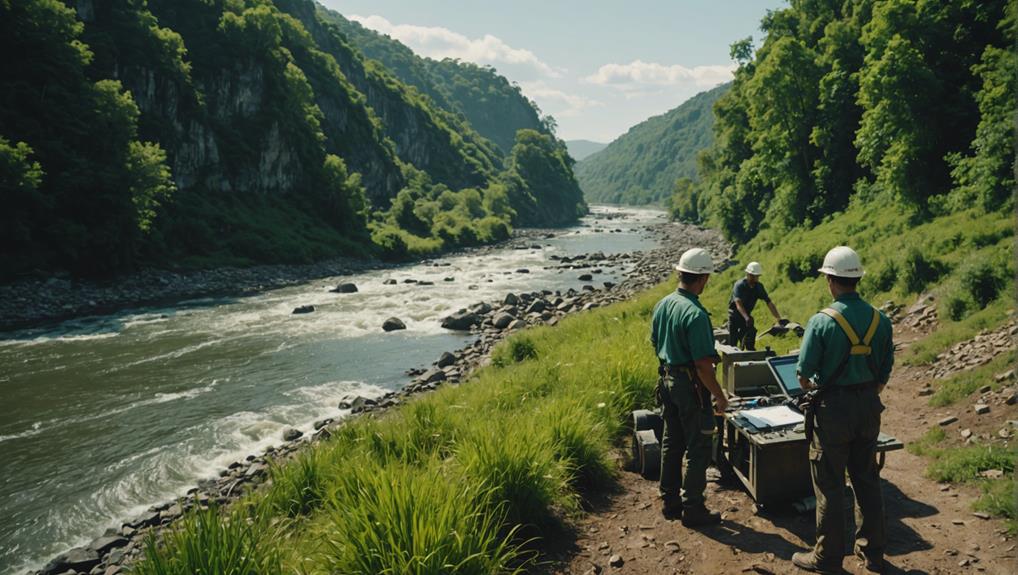
While engaging with communities is foundational, adhering to and exceeding regulatory standards also plays a vital role in responsible gold mining. You're not simply ticking boxes; you're actively contributing to sustainable development. Here's how you can go beyond mere compliance:
- Implement Enhanced Safety Measures: Beyond legal requirements, invest in the latest safety technologies and training to protect your workers.
- Adopt Higher Environmental Standards: Voluntarily reduce your environmental footprint, setting an example in the industry.
- Engage in Transparent Reporting: Regularly publish detailed reports on your environmental and social impacts, fostering trust and accountability.
- Promote Continuous Improvement: Constantly seek new ways to improve your compliance strategies, staying ahead of regulatory changes and community expectations.
Sustainable Mining Technologies
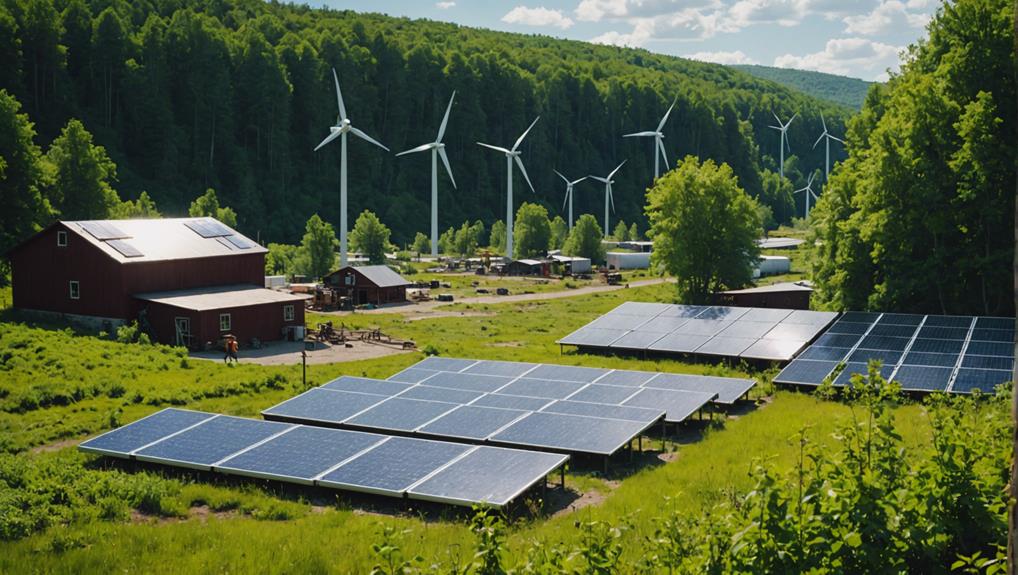
As you investigate sustainable mining technologies, consider how eco-friendly extraction methods can significantly reduce environmental impact.
Integrating renewable energy sources not only cuts down on emissions but can also improve operational efficiency.
In addition, implementing waste reduction strategies is vital for minimizing the ecological footprint of mining activities.
Eco-Friendly Extraction Methods
To reduce environmental impact, many gold mining companies are now adopting sustainable mining technologies. These methods not only minimize ecological damage but also improve efficiency and reduce risks for workers. Here's how they're making a difference:
- Gravity Separation: This process uses gravity to separate gold from other materials without chemicals, reducing toxic waste.
- Bioremediation: Utilizes microorganisms to detoxify sites contaminated by previous mining operations, promoting natural ecosystem recovery.
- Phytomining: Employs plants to absorb gold from the soil, which are then harvested and processed, offering a low-impact extraction method.
- Recycling Water: By reusing process water, mines decrease both consumption of freshwater resources and pollution.
These strategies are essential in advancing responsible gold mining practices.
Renewable Energy Integration
Integrating renewable energy sources is revolutionizing sustainable mining technologies in the gold industry. By harnessing solar, wind, and hydro energy, you're not only reducing carbon emissions but also cutting down on long-term energy costs. This transition supports environmental sustainability and boosts your company's public image as a responsible entity.
Here's a quick look at what some leading gold mining companies are implementing:
| Renewable Energy Source | Benefit |
|---|---|
| Solar Power | Reduces reliance on diesel and lowers operational costs |
| Wind Energy | Provides consistent power supply in remote areas |
| Hydroelectric Power | Offers scalable energy solutions with minimal environmental impact |
Waste Reduction Strategies
Implementing waste reduction strategies is crucial for minimizing environmental impact in gold mining operations. You need to consider several sustainable mining technologies that can significantly reduce waste. Here's how you can make a difference:
- Tailings Reprocessing: By reprocessing tailings, you can extract remaining gold, reducing waste and the need for new mining.
- Dry Stacking: This technique involves de-watering tailings before stacking them. It minimizes the risk of dam failures and water contamination.
- Advanced Sorting Technology: Implement sensors and sorting machines to pre-process ore, ensuring only the ore with sufficient gold is processed.
- Eco-friendly Chemicals: Use biodegradable chemicals for gold extraction to reduce environmental toxicity and promote ecosystem health.
Economic Benefits of Responsibility

Adopting responsible practices in gold mining not only safeguards the environment but significantly boosts your investment returns. You'll find that by prioritizing sustainability, companies reduce risks associated with environmental damage and regulatory penalties. This responsible approach often leads to more stable operations and an improved reputation, which can attract a broader investor base. This increased interest can drive up stock prices and result in better financial performance.
Moreover, by investing in communities and reducing environmental impact, mining companies can secure social licenses to operate, which are vital for long-term access to resources. This not only helps in smoothing operations but also in reducing operational disruptions, ensuring that your investment is both profitable and sustainable.
Case Studies of Success
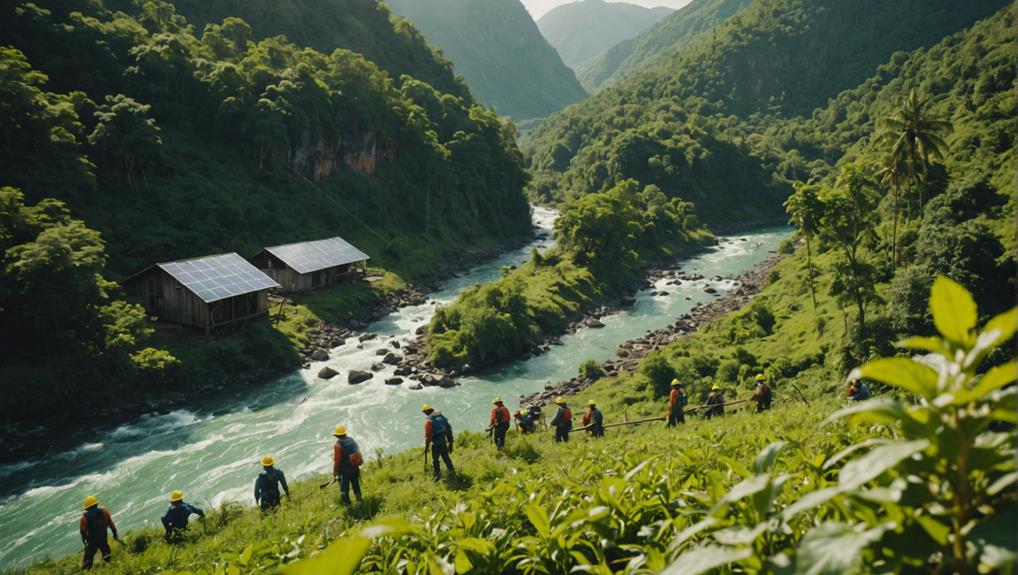
Several companies have established standards in responsible gold mining, showcasing notable environmental and social benefits. You'll find that these initiatives not only safeguard the environment but significantly improve the lives of local communities. Here are a few shining examples:
- Acacia Mining – Implemented water recycling processes in Tanzania, drastically reducing water waste and helping preserve local water resources.
- Newmont Corporation – Established healthcare facilities in Ghana, greatly enhancing medical access for thousands of residents.
- Barrick Gold – Launched education programs in Nevada, providing scholarships and improving educational infrastructure.
- Kinross Gold – Introduced advanced tailings management techniques in Russia, minimizing environmental impact and enhancing safety measures.
These examples highlight how responsible practices can lead to sustainable development in mining areas.
Future Trends in Responsible Mining
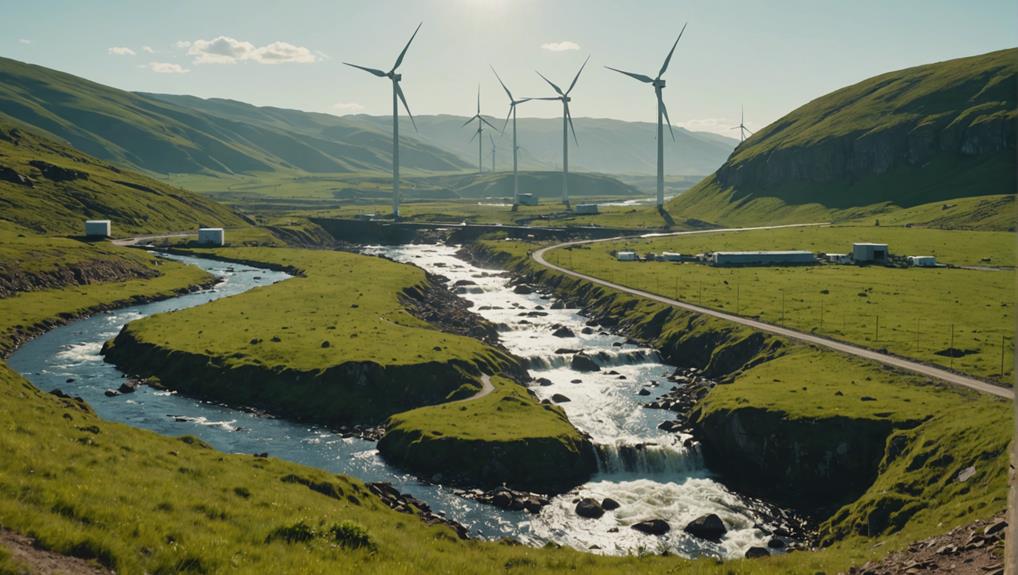
As the mining industry evolves, future trends in responsible mining are increasingly focusing on innovative technologies and community collaboration. You'll see more integration of digital tools that make operations efficient and less harmful to the environment. Let's delve into how these technologies and collaborations are shaping the future.
| Trend | Description | Impact |
|---|---|---|
| AI & Robotics | Advanced machines performing high-risk tasks | Reduces workplace injuries |
| Real-Time Data | Monitoring environmental conditions | Improves sustainability efforts |
| Community Engagement | Regular meetings with locals | Enhances relations and trust |
| Renewable Energy | Incorporating solar and wind power | Decreases carbon footprint |
These strategies aren't just beneficial for the planet; they're also enhancing profitability and stakeholder confidence. You're witnessing a transformative era in mining!
Conclusion
Embracing sustainable gold mining not only slashes operational expenses by up to 15% but also fosters a healthier planet and empowers communities. This economic advantage underscores the value of environmental responsibility. Reflecting on successful transformations in the industry encourages the adoption of cutting-edge technologies for a more equitable mining landscape. Remember, your investment choices shape the future, influencing more than just profit—they support a sustainable world.
The traditional banking and monetary systems often seem like fortresses designed for the wealthy, sidelining everyday investors. Politicians, too, appear to dance to tunes that don't necessarily benefit the broader public. This disillusionment with banks, politicians, and the monetary system at large stirs a desire for greater control over personal finances. Gold offers that control, standing as a steadfast resource in a fluctuating economic terrain.
For those tired of navigating the murky waters of traditional investments, gold emerges as a beacon of stability. It's not just about owning assets; it's about reclaiming power over your financial destiny in a system that often feels skewed towards the elite.
Take action today and reclaim your financial independence. Request your free gold information kit to learn more about stepping into a secure future with gold.
The Gold Information Network
11900 Biscayne Blvd, Ste 127B, Miami, FL 33181
(305) 449-9094
https://goldinfo.net







